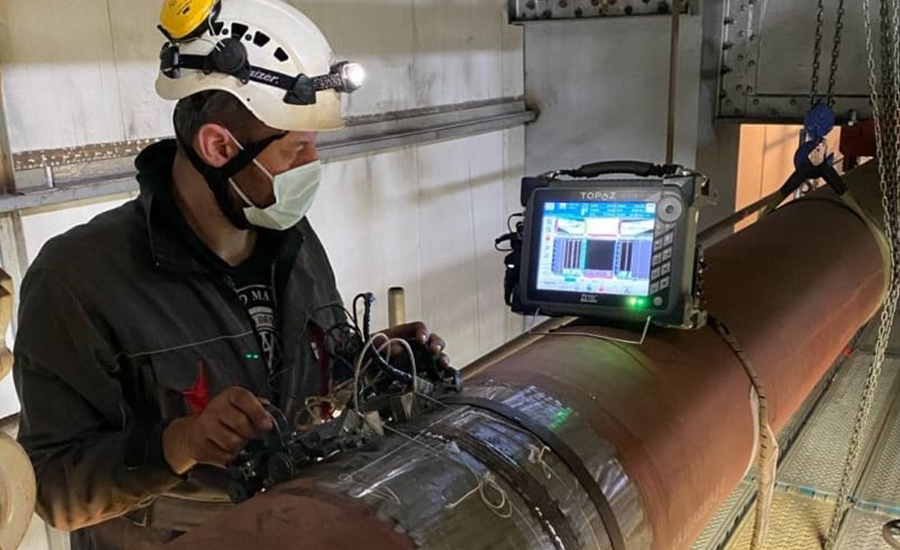Ultrasonic Thickness Gauging (UTG): Accurate measurement of material thickness using ultrasonic waves, performed in dry dock or at sea using multiple echo thickness meters and digital flaw detectors.
Vacuum Box Testing: Detection of leaks and discontinuities in welded joints and other components using a vacuum chamber and pressure differential.
Visual Testing (VT): Visual inspection of surfaces and components to detect defects such as cracks, corrosion, and other imperfections.
Ultrasonic Testing (UT): Detection of internal flaws and discontinuities using high-frequency sound waves, suitable for a wide range of materials and applications.
Positive Material Identification (PMI): Chemical analysis of materials to verify composition and identify potential alloy discrepancies.
Magnetic Particle Inspection (MPI): Detection of surface and near-surface defects using magnetic fields and iron particles, particularly effective for ferromagnetic materials.
Liquid Penetrant Test (LPT): Detection of surface defects by applying a liquid penetrant and observing capillary action to reveal indications.
Holiday Testing: Identification of discontinuities in protective coatings and linings using an electrical current and detection of breaches in the insulation.
Magnetic Flux Leakage (MFL): Detection of corrosion and other defects in pipelines and storage tanks using magnetic flux leakage principles.
Portable Hardness Testing: Measurement of material hardness using portable instruments, suitable for on-site testing of components and structures.
Rebound Hammer Test: Assessment of concrete strength and uniformity by measuring the rebound of a spring-loaded hammer.
Post Weld Heat Treatment (PWHT): Controlled heating and cooling of welded components to relieve residual stresses and improve material properties


